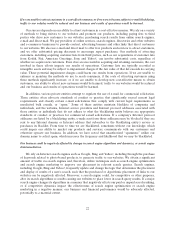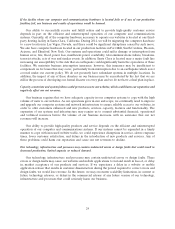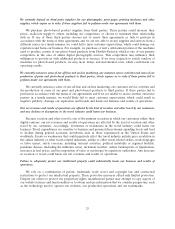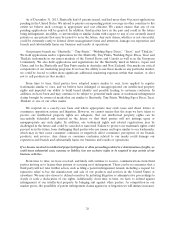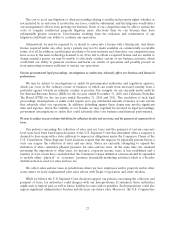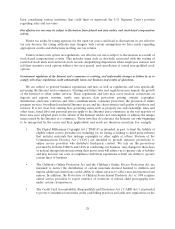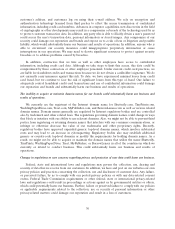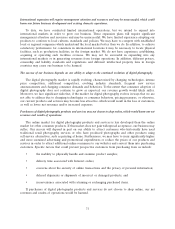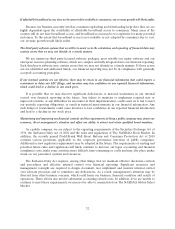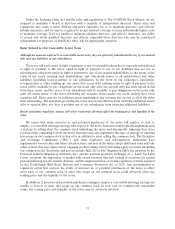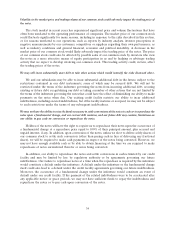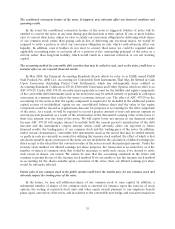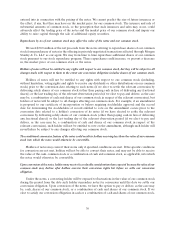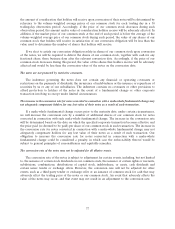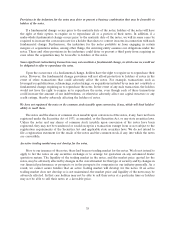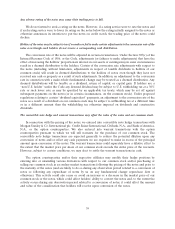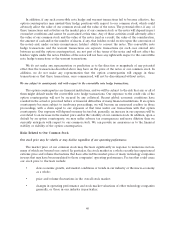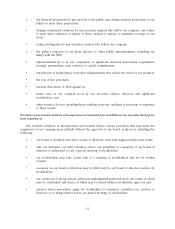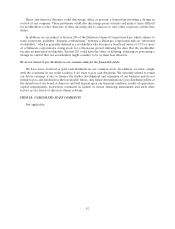Shutterfly 2013 Annual Report Download - page 34
Download and view the complete annual report
Please find page 34 of the 2013 Shutterfly annual report below. You can navigate through the pages in the report by either clicking on the pages listed below, or by using the keyword search tool below to find specific information within the annual report.If affordable broadband access does not become widely available to consumers, our revenue growth will likely suffer.
Because our business currently involves consumers uploading and downloading large data files, we are
highly dependent upon the availability of affordable broadband access to consumers. Many areas of the
country still do not have broadband access, and broadband access may be too expensive for many potential
customers. To the extent that broadband access is not available or not adopted by consumers due to cost,
our revenue growth would likely suffer.
The third party software systems that we utilize to assist us in the calculation and reporting of financial data may
contain errors that we may not identify in a timely manner.
We use numerous third party licensed software packages, most notably our equity software and our
enterprise resource planning software, which are complex and fully integrated into our financial reporting.
Such third party software may contain errors that we may not identify in a timely manner. If those errors
are not identified and addressed timely, our financial reporting may not be in compliance with generally
accepted accounting principles.
If our internal controls are not effective, there may be errors in our financial information that could require a
restatement or delay our SEC filings, and investors may lose confidence in our reported financial information,
which could lead to a decline in our stock price.
It is possible that we may discover significant deficiencies or material weaknesses in our internal
control over financial reporting in the future. Any failure to maintain or implement required new or
improved controls, or any difficulties we encounter in their implementation, could cause us to fail to meet
our periodic reporting obligations, or result in material misstatements in our financial information. Any
such delays or restatements could cause investors to lose confidence in our reported financial information
and lead to a decline in our stock price.
Maintaining and improving our financial controls and the requirements of being a public company may strain our
resources, divert management’s attention and affect our ability to attract and retain qualified board members.
As a public company, we are subject to the reporting requirements of the Securities Exchange Act of
1934, the Sarbanes-Oxley Act of 2002 and the rules and regulations of The NASDAQ Stock Market. In
addition, the recently passed Dodd-Frank Wall Street Reform and Consumer Protection Act of 2010
contains various provisions applicable to the corporate governance functions of public companies.
Additional or new regulatory requirements may be adopted in the future. The requirements of existing and
potential future rules and regulations will likely continue to increase our legal, accounting and financial
compliance costs, make some activities more difficult, time-consuming or costly and may also place undue
strain on our personnel, systems and resources.
The Sarbanes-Oxley Act requires, among other things, that we maintain effective disclosure controls
and procedures and effective internal control over financial reporting. Significant resources and
management oversight are required to design, document, test, implement and monitor internal control
over relevant processes and to remediate any deficiencies. As a result, management’s attention may be
diverted from other business concerns, which could harm our business, financial condition and results of
operations. These efforts also involve substantial accounting related costs. In addition, if we are unable to
continue to meet these requirements, we may not be able to remain listed on The NASDAQ Global Select
Market.
32


